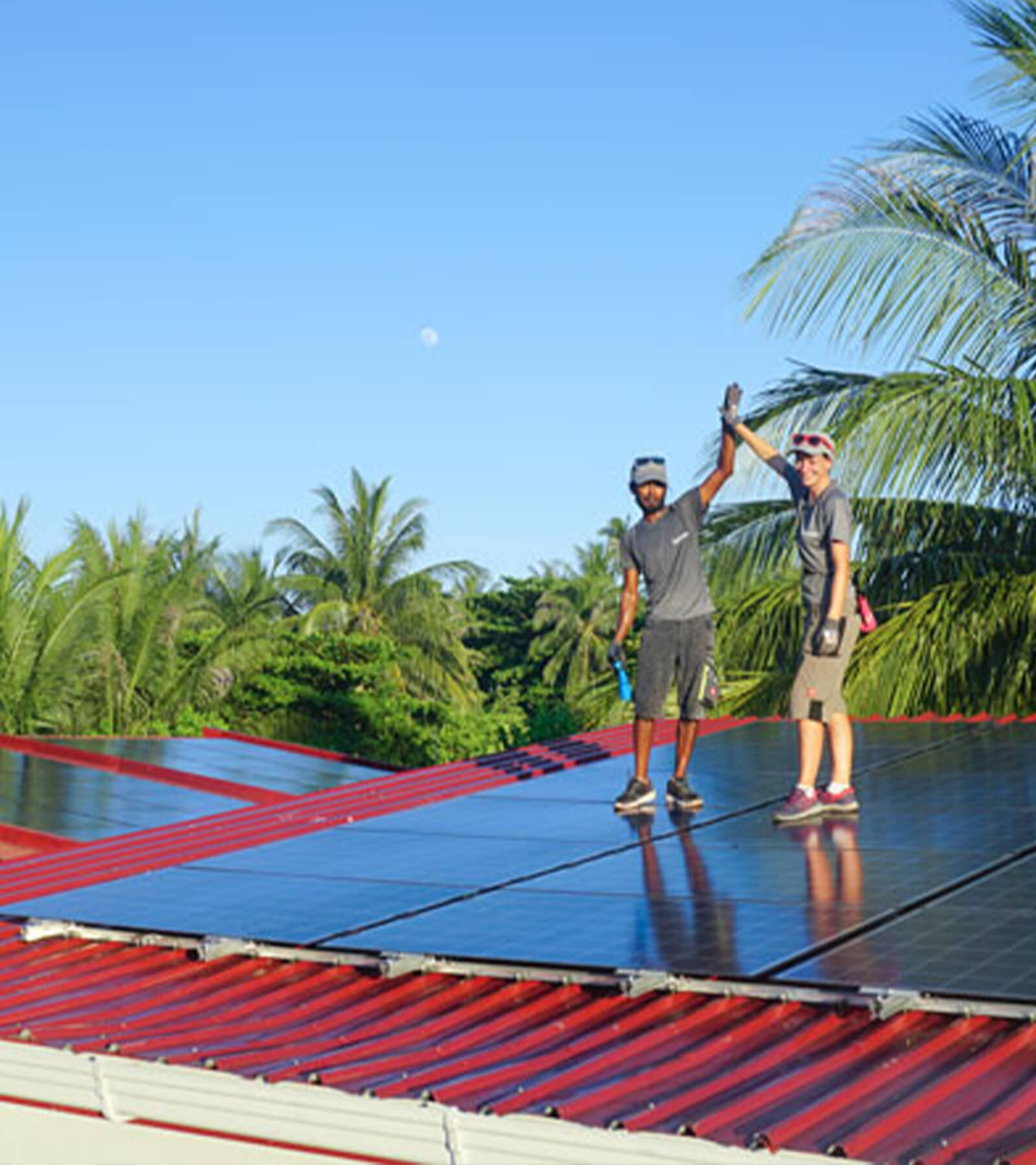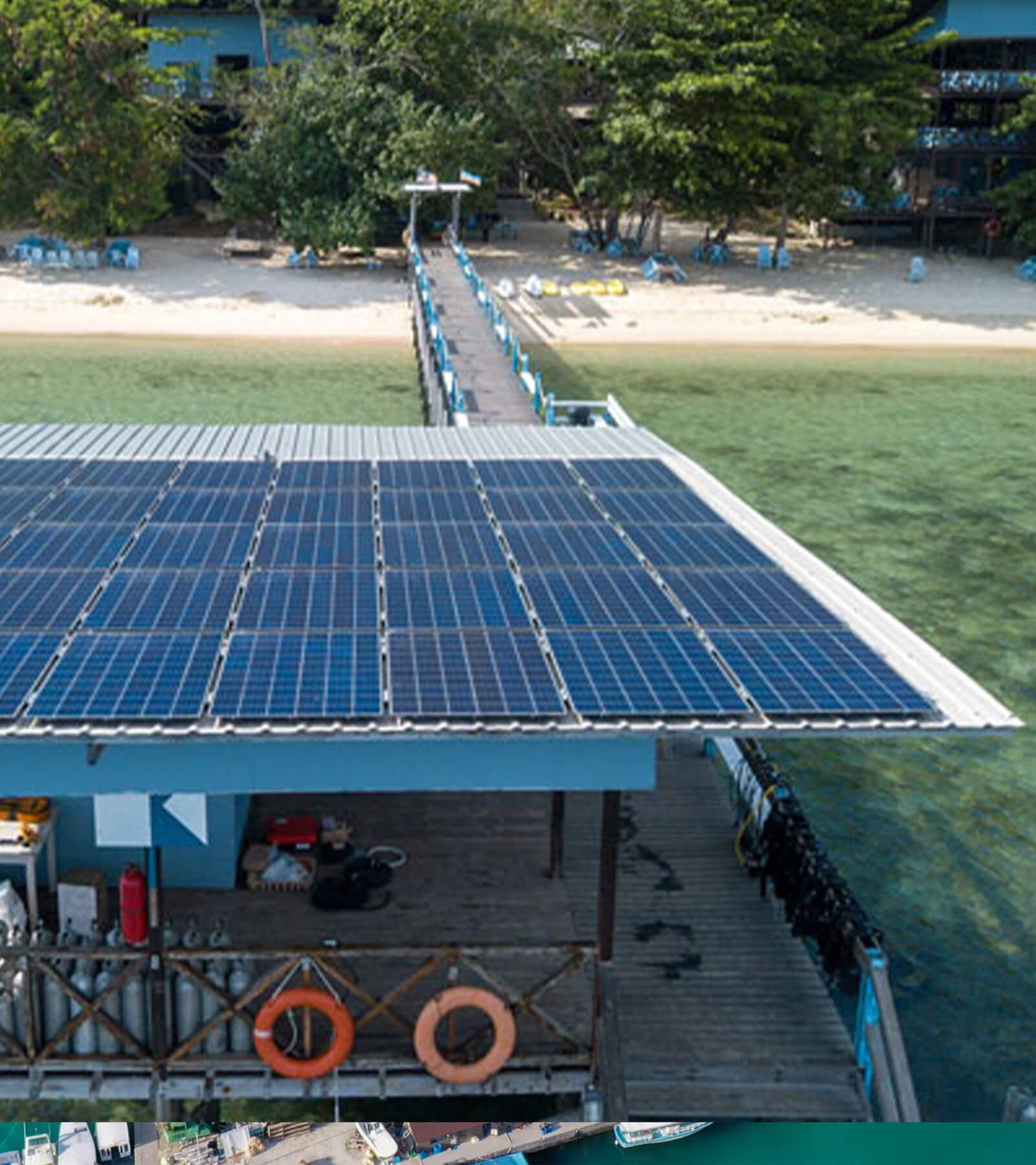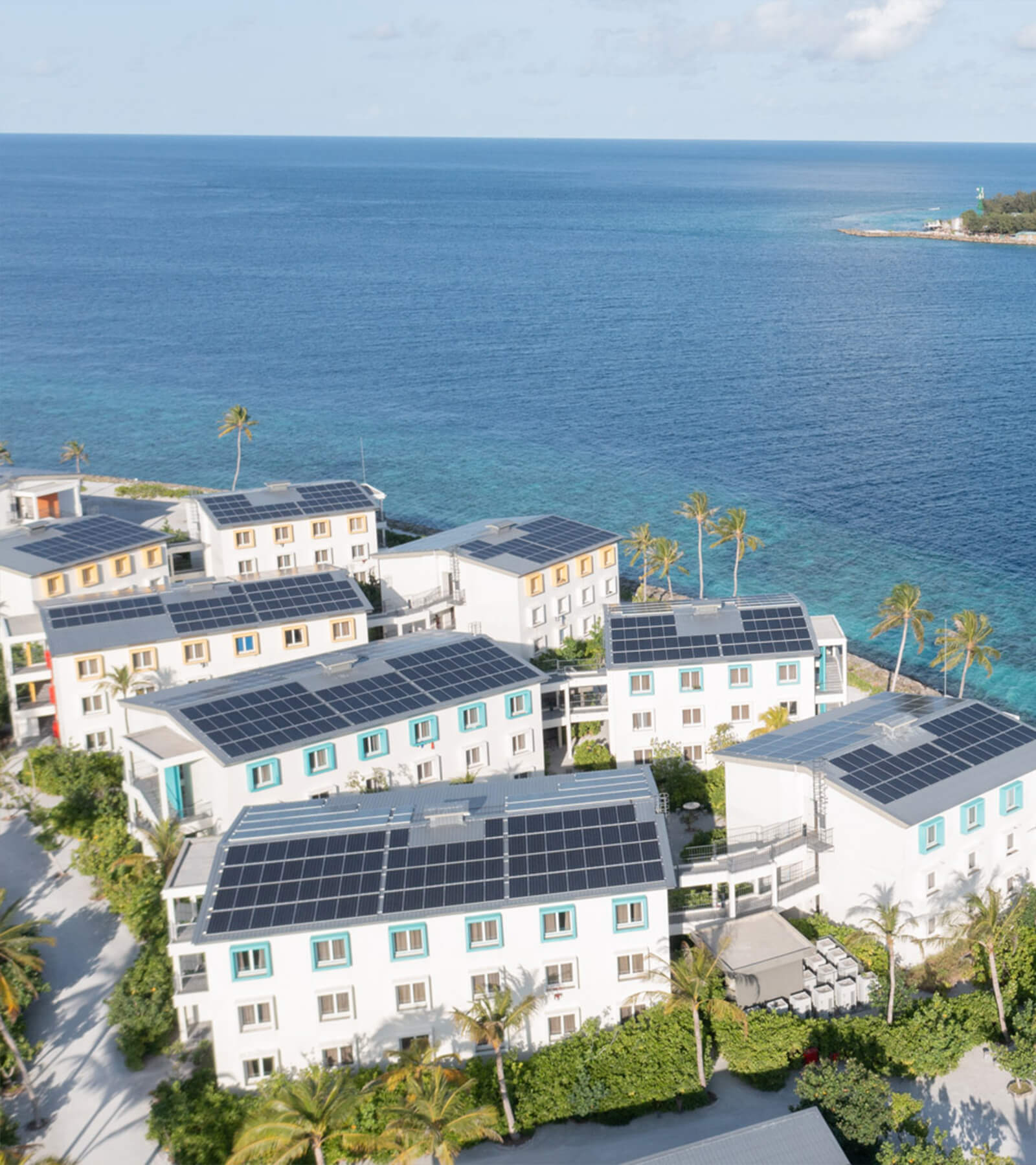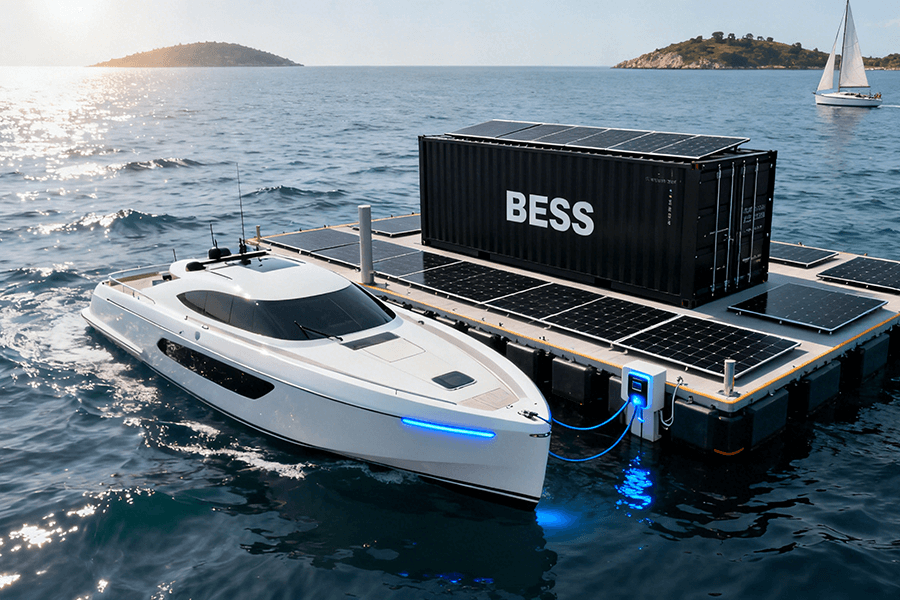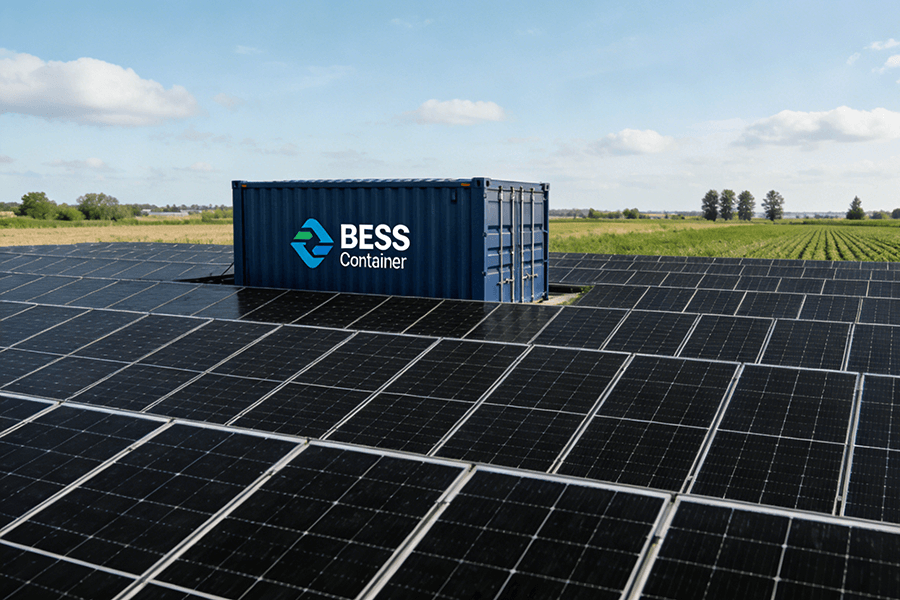
Introduction
The European energy market is in the midst of a profound renewable revolution. Governments across the continent have set ambitious targets for decarbonization, with many aiming for 100% renewable energy generation by 2050. While this transition promises a sustainable future, it also presents significant financial challenges for investors and enterprises. One of the key areas of interest is Battery Energy Storage System (BESS) containers, which have emerged as a crucial technology for integrating renewable energy sources into the grid. However, the million-dollar question remains: Is this investment economically viable?
BESS containers are often hailed as a silver bullet for grid stability, renewable integration, and cost control. They can store excess energy generated from solar and wind farms during periods of low demand and release it when demand peaks, thereby reducing the need for expensive peaker plants. Additionally, BESS containers can help businesses reduce their electricity bills by taking advantage of time-of-use tariffs and providing frequency regulation services to the grid.
However, the true value of BESS containers lies in their ability to balance upfront capital expenses against long-term operational returns. This is where Cost-Benefit Analysis (CBA) becomes an indispensable tool for decision-making. A comprehensive CBA involves:
- Identifying Costs: This includes not only the initial purchase and installation costs but also ongoing maintenance, replacement, and decommissioning expenses. Hidden costs, such as grid connection fees and regulatory compliance, must also be considered.
- Quantifying Benefits: Benefits can be categorized into direct (e.g., revenue from energy arbitrage, capacity market payments) and indirect (e.g., avoided grid upgrades, improved power quality) benefits. Each use case requires a detailed analysis of potential revenue streams.
- Discounting Future Cash Flows: Since costs and benefits occur over different time periods, they must be adjusted to their present value using an appropriate discount rate. This accounts for the time value of money and the risk associated with the investment.
By breaking down costs and benefits across various use cases, CBA transforms guesswork into strategic decision-making. It provides a clear picture of the investment’s net present value (NPV), internal rate of return (IRR), and payback period, enabling investors to assess whether a BESS container project is not just a “green trend” but a truly profitable venture.
In the following sections, we will delve deeper into the components of a CBA for BESS containers in European applications, exploring real-world examples and case studies to illustrate the practical implications of this analytical approach.
Cost Composition of BESS Containers
Understanding BESS costs requires peeling back three layers: initial investments, ongoing operations, and easy-to-miss hidden expenses. Below is a detailed breakdown tailored to the 2025 European market.
Initial Investment Costs
The “down payment” for BESS containers varies by component, with battery cells and energy management systems (EMS) dominating the budget. Regional differences in Europe (e.g., higher labor costs in Western Europe vs. lower logistics costs in Eastern Europe) can shift these numbers by 5–10%, but the following ranges reflect average market rates.
| Component | Cost Range (2025, Europe) | Key Notes |
|---|---|---|
| Lithium-Ion Battery Cells | €100–€150 per kWh |
High-quality NCM/NCA cells (used in 80% of European BESS projects) (source: European Battery Alliance).
|
| Container Body (10MW/20MWh) | €200,000–€300,000 | Includes insulation, fire suppression, and weatherproofing (critical for Northern Europe’s harsh winters). |
| Energy Management System (EMS) | €150,000–€250,000 (mid-sized projects) | Acts as the BESS “brain”: includes real-time monitoring, grid integration software, and safety protocols. |
| Installation & Commissioning | €80,000–€120,000 (10MW/20MWh) | Often overlooked: covers site prep, wiring, and regulatory approval support. |
Total Initial Investment for a 10MW/20MWh Project: €2.43M–€3.27M
Operation and Maintenance (O&M) Costs
BESS containers aren’t “set-it-and-forget-it”—annual O&M costs eat into profits if unmanaged. For a 10MW/20MWh project (the most common size in European grid and industrial applications), here’s what to expect:
| O&M Category | Cost Details (Annual) |
|---|---|
| Daily Inspections | €180,000–€300,000 (€500–€1,000/day for 360 operational days; outsourced vs. in-house). |
| Battery Replacement | €166,667–€200,000 (amortized over 10–12 years; total replacement cost: €2M–€2.4M). |
| System Upgrades | €25,000–€33,333 (1 major upgrade every 3 years; e.g., EMS software, grid compliance updates). |
| Emergency Repairs | €20,000–€40,000 (contingency for component failures, e.g., cooling systems). |
Total Annual O&M Cost (10MW/20MWh): €391,667–€573,333
A real-world example: A 2024 BESS project in Germany (10MW/20MWh) reported €420,000 in annual O&M costs—right in the middle of this range—with 60% allocated to inspections and battery maintenance (source: German Energy Storage Association).
Hidden Costs
These “sneaky expenses” can add 10–15% to your total project cost if unplanned. In Europe, regulatory and logistical hurdles are the biggest culprits:
- Policy Compliance: €50,000–€100,000
Europe’s strict safety (EN 62933) and environmental (EU Battery Regulation) standards require third-party testing and documentation. For example, obtaining a fire safety certificate in France costs ~€15,000 more than in Spain.
- Transportation: €20,000–€50,000
Shipping a BESS container from a manufacturing hub (e.g., Poland) to a remote site (e.g., Norway) costs 2x more than shipping to a Western European city like Amsterdam.
- Grid Connection Fees: €100,000–€200,000
Grid operators (e.g., National Grid UK, Enel Italy) charge for infrastructure upgrades and metering. In the UK, connecting to the high-voltage grid costs ~€150,000 more than the low-voltage grid.
Economic Benefits in Different Application Scenarios
The true value of BESS containers shines in three key European use cases. Below, we quantify benefits using 2024–2025 market data.
Grid-Side Benefits
Grid operators rely on BESS for frequency regulation and peak shaving—two services with predictable, high returns in Europe.
| Service | Annual Revenue (10MW BESS) | Key Data Point |
|---|---|---|
| Frequency Regulation | €500,000–€700,000 | Europe’s grid requires 50Hz ± 0.5Hz; BESS responds in <1 second (faster than gas peakers). (source: ENTSO-E) |
| Peak Shaving | €800,000–€1M | During winter peaks (e.g., January 2025 in Germany), electricity prices hit €300/MWh—BESS discharge saves grid operators from expensive peaker plants. |
Total Annual Grid-Side Revenue (10MW): €1.3M–€1.7M
A 2025 project in Spain (10MW BESS) reported €1.5M in annual grid revenue—enough to cover O&M costs and generate a €1M profit (source: Spanish Grid Operator REE).
Industrial and Commercial (I&C) Side Benefits
For European factories and businesses, BESS containers cut energy bills and avoid costly outages.
- Peak-Valley Arbitrage:
European electricity prices swing wildly (e.g., €50/MWh off-peak vs. €250/MWh peak in France). A 5MW/10MWh BESS at a large manufacturing plant (100MWh/month consumption) saves €300,000–€400,000 annually by charging off-peak and discharging during peaks.
- Power Outage Avoidance:
A food processing plant in Belgium (which lost €50,000 per outage pre-BESS) installed a 2MW/4MWh BESS and avoided 3 outages in 2024—saving €150,000 in production losses.
Total Annual I&C Benefit (5MW/10MWh): €450,000–€550,000
Renewable Energy Supporting Benefits
BESS solves a major European problem: renewable curtailment (wasting wind/solar power when the grid is full).
Take a 50MW wind farm in Sweden:
- Pre-BESS: 10% curtailment (5MW of power wasted daily) = €500,000 in lost annual revenue.
- Post-BESS (10MW/20MWh): 3% curtailment (1.5MW wasted daily) = €350,000 in recovered revenue.
Solar farms see similar gains: A 30MW solar park in Italy reduced curtailment from 8% to 2% with a 5MW/10MWh BESS—adding €240,000 to annual revenue (source: Italian Solar Energy Association).
Cost-Benefit Optimization Measures
To maximize returns, focus on two critical levers: extending battery life and boosting efficiency. These strategic initiatives can significantly enhance your Battery Energy Storage System (BESS)’s profitability, potentially increasing it by 20–30%.
Extend Battery Lifespan
Batteries constitute the largest cost component in a BESS project. Therefore, prolonging their operational life directly translates into substantial cost savings. Here are some proven methods:
- Optimized Charging/Discharging
Implementing smart charging and discharging algorithms is crucial. By avoiding deep discharging (maintaining the State of Charge, SOC, between 20–80%) and overcharging, you can effectively extend the battery’s lifespan. According to a study published in the Journal of Power Sources, this approach can extend battery life by 20–30%. For example, the expected lifespan of a battery could increase from 10 years to 13 years, leading to significant long-term savings.
- Thermal Management Upgrades
European climates present diverse challenges to battery longevity. In Southern Europe, extremely hot summers can accelerate battery degradation, while cold winters in the North can reduce battery performance and lifespan. Installing advanced cooling and heating systems is a worthwhile investment. Although the upfront cost ranges from €30,000–€50,000, it can save over €100,000 in early battery replacement costs.
Improve Energy Utilization Efficiency
Enhancing the energy utilization efficiency of your BESS allows you to generate more revenue from the same installed capacity. Consider the following strategies:
- Advanced EMS Upgrades
Upgrading to next-generation Energy Management Systems (EMS), such as those powered by artificial intelligence for demand forecasting, can increase energy utilization by 5–10%. For a 10MW BESS, this improvement could result in an additional annual revenue of €65,000–€170,000, based on the grid-side benefits detailed in Section 3.1.
- Hybrid Integration
Pairing your BESS with solar panels, creating a “solar+BESS container” setup, can significantly reduce grid electricity purchases. A recent 2025 project in Portugal, featuring a 5MW solar array combined with a 5MW/10MWh BESS, demonstrated a 25% reduction in energy costs compared to a standalone BESS, as reported by the Portuguese Energy Agency. This hybrid approach not only cuts costs but also increases the overall sustainability and resilience of the energy system.
Conclusion
In 2025 Europe, BESS containers are no longer just “sustainable”—they’re financially viable—but only if you manage costs and target high-benefit use cases.
- Key Takeaways:
-
- Initial investments (€2.4M–€3.3M for 10MW/20MWh) are offset by annual benefits (€1.3M–€1.7M for grid-side projects).
-
- Hidden costs (policy, transport, grid fees) can erase 10% of profits—plan for them upfront.
-
- Optimization (battery life, efficiency) boosts returns by 20–30%.
Maxbo Solar: Your Partner in European BESS Success
At Maxbo Solar (www.maxbo-solar.com), we’ve spent a decade tailoring BESS solutions to Europe’s unique market. Here’s how we help you win:
- Cost Transparency: We provide itemized quotes that include hidden costs (e.g., local compliance fees in Germany or grid connection fees in the UK)—no surprises.
- Optimized Designs: Our AI-powered EMS and thermal management systems extend battery life by 25% and boost efficiency by 8%—proven in projects across Spain, Germany, and Sweden.
- Turnkey Support: From permitting (we handle EN 62933 and EU Battery Regulation compliance) to installation, we manage every step.
A recent Maxbo project (10MW/20MWh in Poland) delivered €1.6M in annual grid revenue with only €400,000 in O&M costs—achieving a 5-year payback period.
Ready to turn your BESS investment into profit? Visit www.maxbo-solar.com or contact our European team today.

